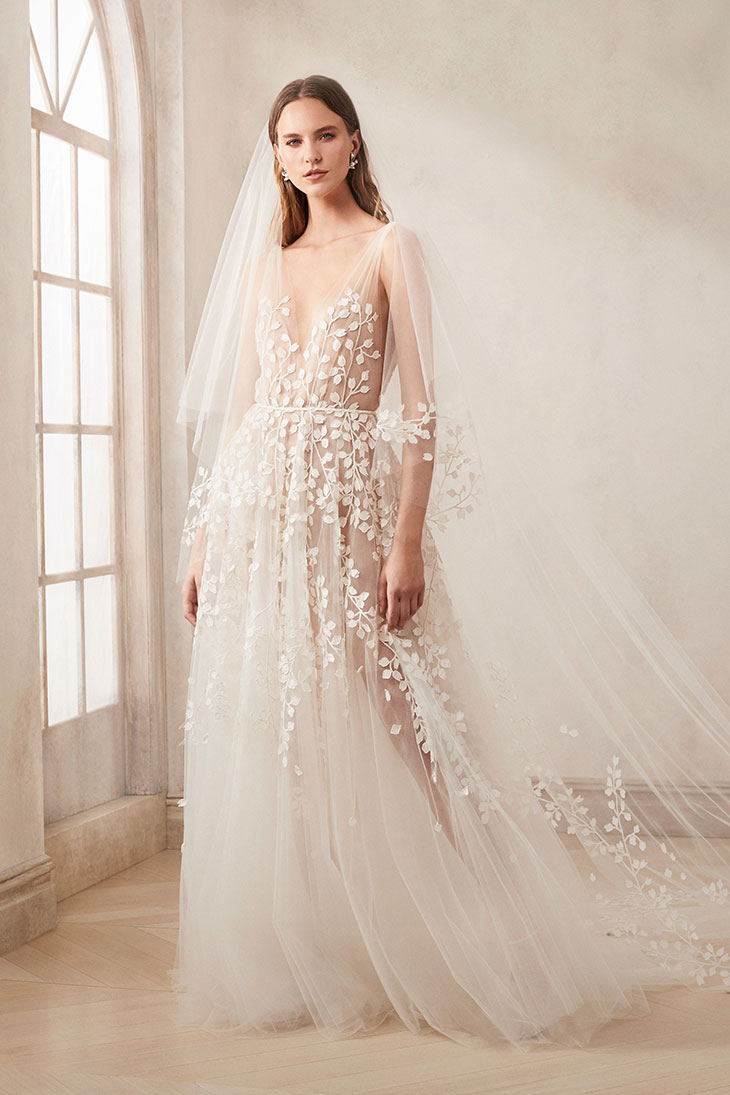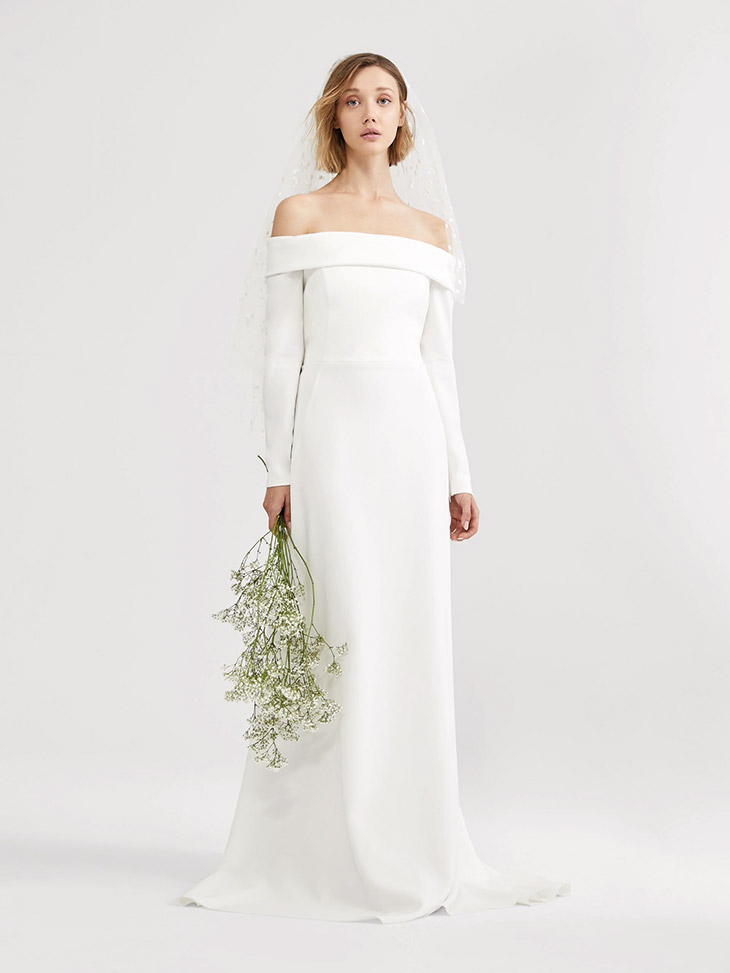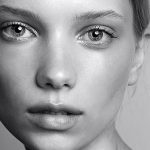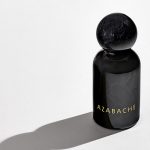
The veil is a traditional wedding attribute. And although in the last couple of years it has strongly surrendered its positions (hair ornaments became fashionable), many brides cannot imagine themselves without a veil. Like any accessory, the veil should go well with the dress, appearance, and image of the bride in general. So how do you choose the perfect veil?
Combination of veil types and face shape:
- For a round face shape long (up to the shoulders and below) and rather high fixed veil is suitable, and excessively wide and puffy variants should be avoided.
- Long styles can also help smooth out the proportions of a square face. Round and cascading veils soften the features of the face.
- For brides with a rectangular (elongated) face, it’s a good idea to opt for a blousy but still short veil (such as the Blusher).
- Oval faces are known to suit everything. But it is better to avoid excessive puffiness and width of the veil in order to maintain the correct proportions.
The veil and the type of figure:
- Girls with large breasts or tummies should choose the veil length to the fingertips and below. Such an accessory will visually “stretch” the figure and will look perfect under wedding dresses from famous designers.
- For brides with a pear-shaped figure, on the contrary, it is advisable to choose a veil no lower than the waist to balance the proportions.
- Owners of magnificent forms should ideally go for narrow one-tier models to avoid extra volume. At the same time, tall brides of plus size can afford long styles. For everyone else, it is better to choose models up to the waist and above.
Shoulder-length veil
Usually, the image of the ideal outfit is formed in a girl long before the proposal of marriage. She already knows what hairstyle, veil, etc. she wants. But beginning to find out what options there are, the bride is lost, she wants to try on everything. It is worth remembering that the bride’s veil should fully harmonize with the dress. Although in terms of tradition it is impossible to try on the veil and the dress, fashion and style require this. The veil can vary in many aspects. When it comes to length, the classic length is below the shoulder blades. Anything shorter is not a veil, but variations of veils. Not exactly a veil in the traditional sense of the word. A favourite option of practical brides who do not want to wear a heavy-on-the-head and tangle in the fabrics. It will emphasize the beautiful back of the dress. This veil is not suitable for weddings.
A waist-length veil
Can you imagine a bride without a veil? Have you ever wondered why a bride wears a veil? The veil is a symbol of purity and chastity, so traditionally, when a bride wears a wedding dress for the first time in her life, she also wears a veil on her head. This tradition does not apply to ladies getting married again. Getting married for the second time, a woman no longer embodies her maiden innocence, which is considered to be inherent in girls going down to the wedding party for the first time. Is it compulsory to wear a veil at the wedding? Answer this question every girl herself. Strict rules, of course, no. But, still, girls are still much more likely to choose a wedding dress that includes a veil, not only as a tribute to tradition but also as an essential attribute of the elegant, slightly mysterious image of the bride.

A veil down to the hips
Veil for the bride is not just a part of the wedding image, because it has several purposes, among which it is worth noting the aesthetic and symbolic. And although in the modern world have become popular other head ornaments as options for its replacement – the demand for the classic veil in Ukraine and abroad will never disappear. Due to this fact, brides from all over the world can cover their heads with veils, following traditions and underlining their femininity. Long or short, decorated or veil with lace, this headpiece is really important. The most important tip – do not go unquestioningly with the fashion! Everything must emphasize the bride’s individuality and beauty.
Long veil
Long veils are considered the most traditional, as ancient wedding rites required the veil to cover not only the head but also the upper body. A long bridal veil will be appropriate with almost any hairstyle, from long chic curls to a stylish short haircut. The veil can have a tiered design, where in addition to the overall length there are also shortened top layers of fabric, which cover the face (again, paying tribute to tradition!). A long veil is usually attached to the back of the head, at the crown, or under the hair, the most important thing is to ensure that it is securely attached so that you think about the celebration and not the hairstyle!
Elbow-length veil
The most common type of veil is about 80 cm long. It does not interfere with the bride on the wedding day at all, and thanks to the beautifully decorated edge it is a beautiful addition to the dress.
For more wedding dresses, tips and collections visit the extensive Bridal page on DSCENE.



